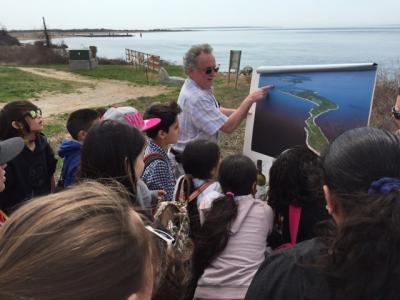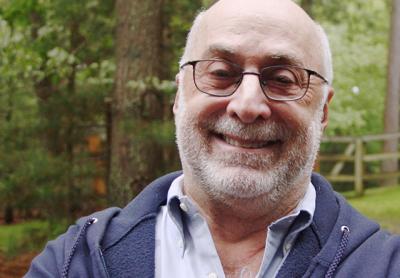Debate Expands on Library Event on Town Land
Debate Expands on Library Event on Town Land

The East Hampton Library’s upcoming Authors Night fund-raiser, to be held next month on an Amagansett field bought by the town with community preservation fund money, dominated discussion at Monday night’s meeting of the Amagansett Citizens Advisory Committee, though there was less rancor in the room than there had been the month before, when East Hampton Town Councilman David Lys, the town board’s ACAC liaison, announced the Aug. 11-12 event, calling it a “done deal.”
At that meeting, members upbraided the councilman and the town board for approving the annual benefit — which attracts hundreds of people and has been held in East Hampton Village in the past — without asking the committee for its input. On Monday, however, although Jim McMillan, the chairman, groused that “David didn’t take our concerns back to the board last time, he just said it was a ‘lively meeting,’ ” and Bill de Scipio, a member, proposed a class action lawsuit against the town, most people seemed resigned to a fait accompli and concentrated instead on its implications for the future.
“How many C.P.F. properties are there in the town?” asked Vicki Littman, who lives next to the 555 Montauk Highway field in question. “Three hundred seventy-nine,” she said, answering her own question. “So when you open them up, you are opening up residential properties all over town. Are we going to open up 379 properties to fund-raising?”
“I understand the town is thinking of rewriting the code to change the C.P.F.’s initial purpose re: open space,” said Mr. Lys.
Several of those in the room had written letters in recent weeks wondering whether, as Tina Piette said, the library event was “a bigger question than this one place. If you allow it on one parcel, how does it affect everything?” — in other words, whether it will set a precedent. Among the letter-writers was Rachel Gruzen, an environmental planner, who reminded the group that “the original intent of C.P.F. was biological diversity on the East End. Now we’re talking about recreation. How much do you want to winnow away?”
“This is just one permit,” Mr. Lys answered. “It doesn’t set a precedent.”
Britton Bistrian of Land Use Solutions suggested that the committee get a list of C.P.F. properties in Amagansett and “give the board some feedback: ‘This is good for recreation, this is appropriate for open space,’ so we don’t have to discuss this a year from now.” Ms. Piette and Jeanne Frankl agreed.
Then followed a prolonged series of motions as to the committee’s next step, during which Mr. de Scipio proposed asking the Suffolk County district attorney “to look into the legality of holding a fund-raiser on C.P.F. land.” In the end, it was agreed to write to the town board requesting “a dialogue about the considerations leading the board to review the management and use of C.P.F. properties.”
Mr. Lys had begun the evening by passing out a revised copy of the minutes from last month. He had made several changes, which he highlighted in yellow marker.
For example, he amended a sentence saying that “the [town] board wants to codify C.P.F. properties to allow events on all of our open space like Southampton does,” to read that “Councilman Lys would like the town board to discuss potential changes in the code to address the uses on C.P.F.-purchased properties. And that Southampton, unlike East Hampton, has language in their code that addresses these properties and potential event uses.”
Some members took umbrage at the changes. “We do our best here,” Rona Klopman, the committee’s co-secretary, told the councilman. “Unless it’s really pertinent, you can’t rewrite the minutes.”
“I do believe they’re pertinent,” he responded.
“I wrote exactly what I had in my notes,” Ms. Klopman insisted.
“Let David respond to the minutes rather than correct them,” said John Broderick.
“As long as what was actually said is not changed,” said Mr. McMillan.
Others chimed in, some citing Robert’s Rules of Order. “How many members who were here last month want to keep the minutes as they are?” Mr. McMillan asked after the back-and-forth over the minutes had gone on for more than half an hour. Three hands were raised, including his own and the vice chairwoman’s, Vicki Littman. Eventually, Jeanne Frankl suggested attaching Mr. Lys’s changes to the minutes and accepting them as “addendum,” which was done.
In other news of the hamlet, Mr. Lys told the committee that a large elm tree on Main Street, in front of Stephen Talkhouse, is leaning out into the road and brushing the tops of passing trucks; it will be trimmed, as will a limb from a split tree looming over the bleachers at the Amagansett School ball field. Lighted crosswalks, which have been in the works for months, will be installed starting next month, he said, and “traffic will be minimally impacted.”
The councilman also informed the committee that a wood-and stone groin at Big Albert’s Landing beach is in a “decrepit state.” The Nipper Guard program for children age 6 through 8 meets at that beach, and the town is looking for “a short-term fix.” Removing a section of the groin or putting up a fence to block access are among the possibilities.
At the entrance to the town-owned parking lot behind Amagansett Main Street, where new hourly restrictions are under discussion, plans still show a traffic arm and ticket-spitting machine, Mr. Lys said. Ms. Gruzen, a recently appointed trustee of the Amagansett Library next door, said the library was not happy about that, and Mr. Lys said he wasn’t either, nor was Councilman Jeff Bragman. “The town board knows ACAC does not want tickets,” he said.





